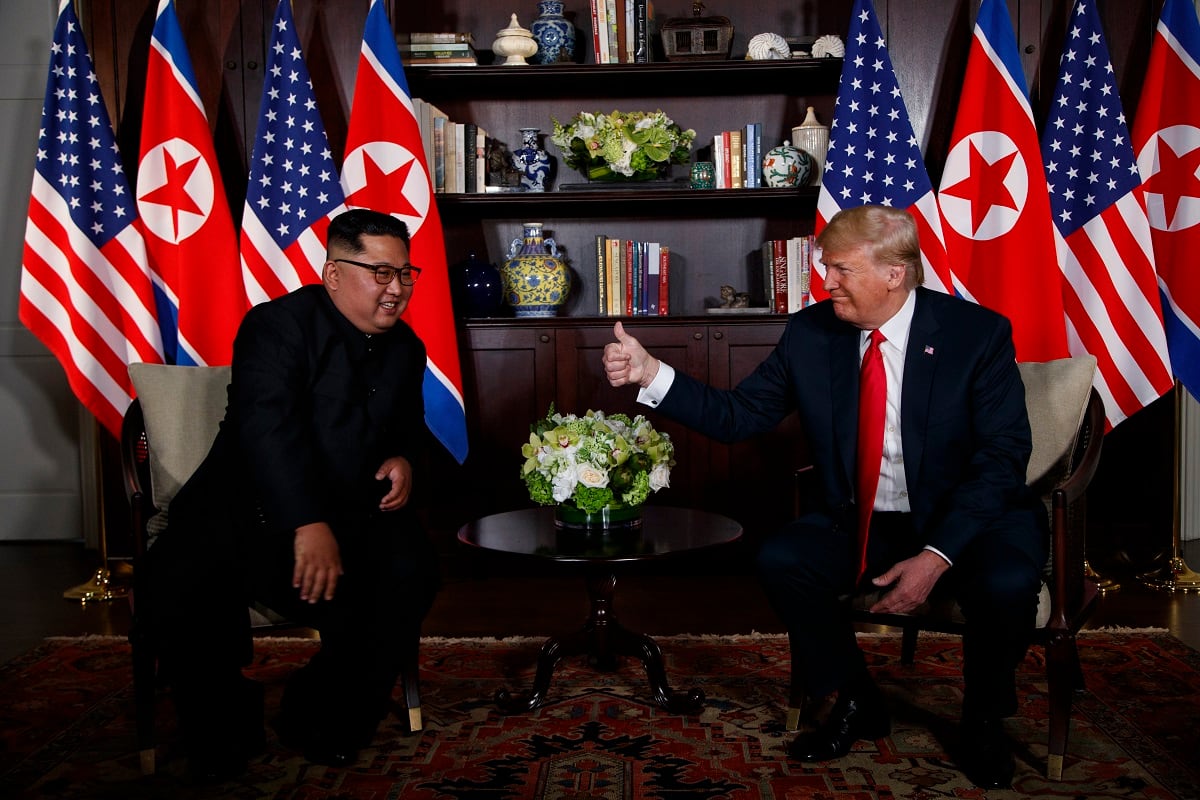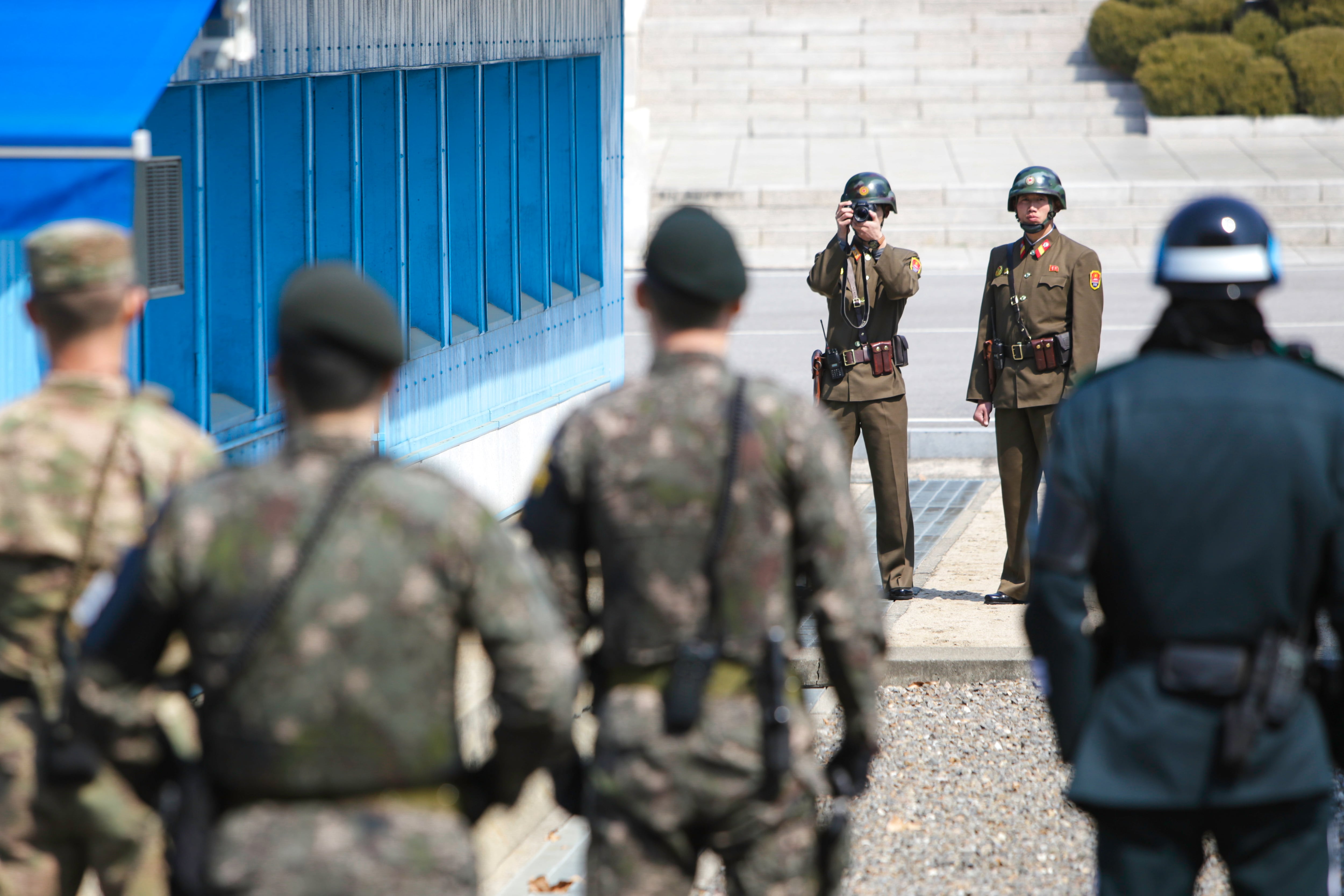The U.S. has moved 100 wooden transfer cases to the North Korean border and set other preparations in place to receive as many as 200 sets of human remains, a United Nations Command official said Saturday.
The transfer cases have been moved up to the Joint Security Area, an iconic area within the demilitarized zone where North Korean and South Korean soldiers often stand face-to-face between a series of blue meeting houses that extend along both sides of the demarcation line and offer a neutral place to communicate.
“Today we moved 100 wooden temporary transit cases, which we had built in Seoul, to the JSA so that we are ready to receive remains and able to transport them in a dignified manner,” the official said on the condition of not being identified.
“We are also moving [United Nations Command] flags to the Joint Service Area and trestles on which the boxes can stand as we prep them to move them to Osan [Air Base.]”
The official did not have details on when the transfer would take place.
President Donald Trump made the return of the remains part of the agreement he made with North Korean leader Kim Jong-Un last week in Singapore. As part of the agreement, the U.S. and South Korea are also suspending their annual large-scale military exercises.
RELATED

The Defense POW/MIA Accounting Agency has previously reported that North Korean officials have notified the U.S. that they have as many as 200 sets of U.S. remains from the Korean War, however it is not clear how many would be transferred in this ceremony.
The UNC official said that civilian-hired vans will be used to drive the remains in the wooden transfer boxes back to Osan.
Army Gen. Vincent Brooks, the United Nations Command, Combined Forces Command and U.S. Forces-Korea commander, will formally receive the remains at Osan from the civilian drivers. Then, DPAA will in-process the remains and prepare them for transit to the U.S.

Once DPAA’s initial work is complete, there will be a formal ceremony at Osan where the cases will be re-draped with American Flags to repatriate them and begin the final journey home.
The U.S. has prepared 158 metal coffins to fly the remains home.
The remains will be loaded onto a C-17 and flown to the DPAA lab in Hawaii, where the painstaking process of using DNA from family members, personal effects and other forensics to identify the remains will begin.
Human remains from war can often be intermingled fragments as small as a single bone, or can be a larger set, such as hip bones or skulls. It will likely take months of lab work to determine exactly how many different sets of remains there are, and begin reuniting them with their families.
DPAA estimates that “of more than 7,800 men lost and unrecovered from the Korean War, about 5,300 were lost in North Korea.”
The agency said most of those personnel were in prisoner camps, where they anticipate additional remains would still be concentrated.
Defense Secretary Jim Mattis departs this weekend for China and will be visiting Seoul later in the trip, however it is not clear whether he would be present for a transfer ceremony.
Tara Copp is a Pentagon correspondent for the Associated Press. She was previously Pentagon bureau chief for Sightline Media Group.





